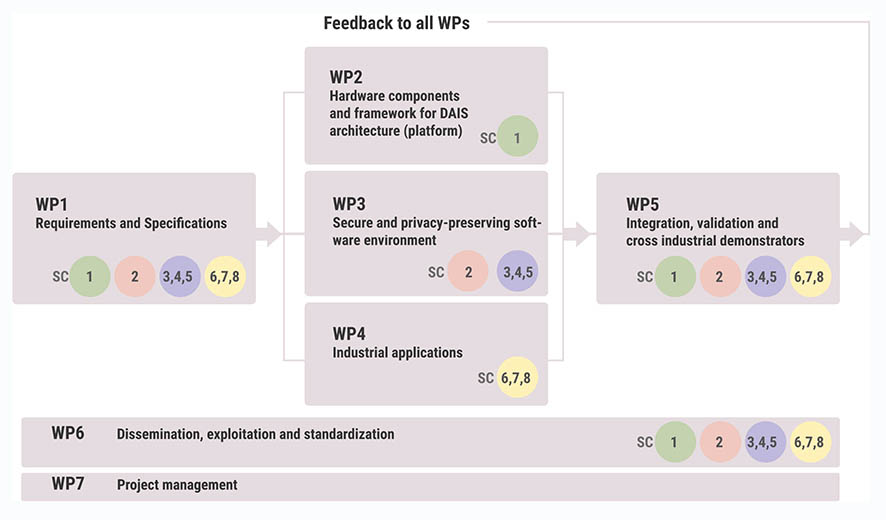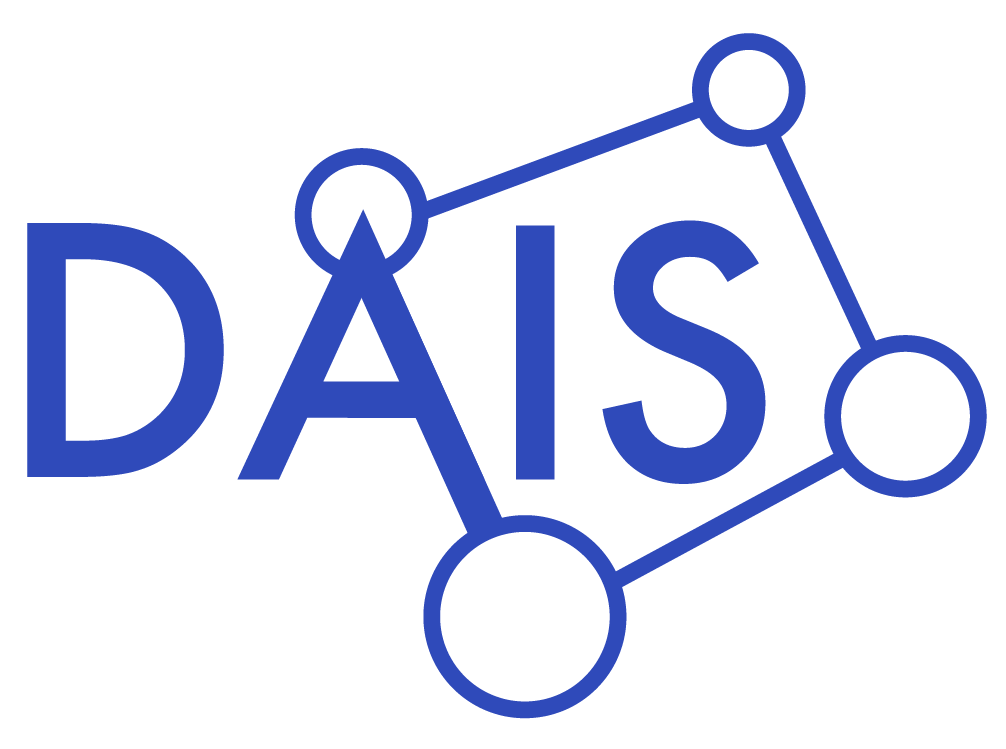Workplan
Due to orientation of the project towards the product industrialization, a careful partitioning of the work is necessary. As such, DAIS is split into:
- Five technical work packages (WP1 – WP5)
- One work-package (WP6) that covers regulatory alignment, standardisation, exploitation and dissemination activities, due to the project’s high importance for generating impact.
- The project management work-package (WP7) ensuring and monitoring the collaboration
The research and innovation work in the project is defined by the requirements derived in WP1. These requirements are coming from the use cases, which are part of the WP4 and WP5 on demonstrators and evaluation. In WP1, we do the collection, refinement and consolidation of the requirements and research drivers. These consolidated requirements and research questions will then be the basis of the work in WP2, WP3, which will provide technical solutions that—in turn—will be applied and evaluated in several demonstrators in WP4 and WP5. WP2 is concerned with the development of the DAIS hardware components, while WP3 focuses on software for the DAIS system. The work in WP2, WP3 and WP4 happens in parallel, interacting on the issues related to the DAIS framework, wireless protocol, architecture and methods and tools. All WPs are structured such that intermediate evaluation of the approach will be possible in M24.

To manage the wide technology base of DAIS, the consortium has defined so-called supply chains (SC) and mapped them into the work packages. A supply chain is the logical/virtual combination of partner activities fitting together within a specific topic and leading to a combined result, such as a demonstrator. DAIS defines two types of supply chains:
- The enabling technology supply chains (1-5) developing the fundamental core SW and HW technology elements (such as components, systems and architectures) required by other supply chains (6-8).
- The application supply chains (6-8) employing and validating the results achieved in the enabling technology supply chains.
Each supply chain clearly addresses a specific DAIS objective. This approach forms a clearly arranged matrix structure ensuring a clear understanding of responsibilities for project results and the achievement of project objectives, by assigning a lead for each supply chain and well-defined interfaces towards the WPs as well as to parallel supply chains. Consequently, this matrix structure supports the effective and efficient collaboration between the partners in a focused manner.
